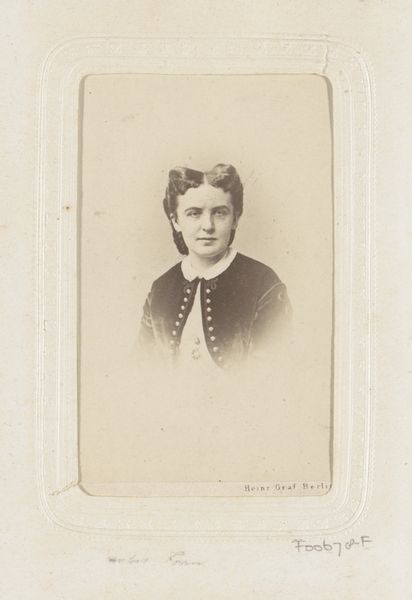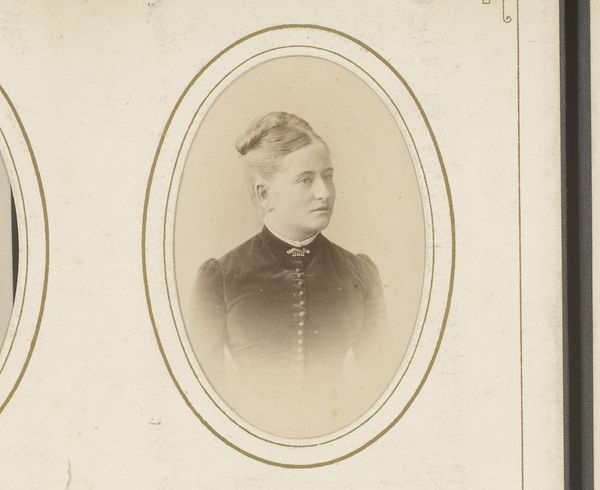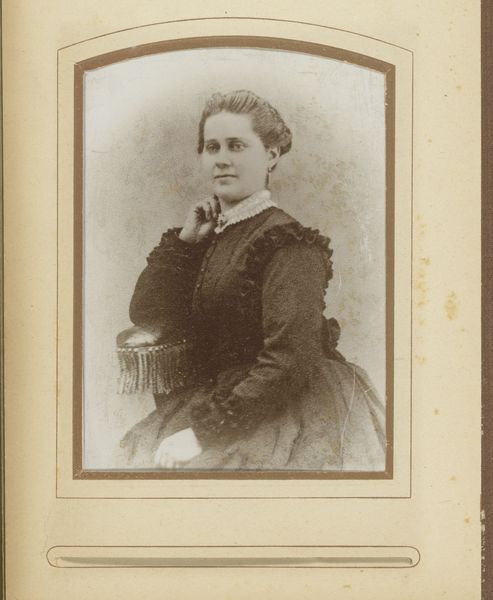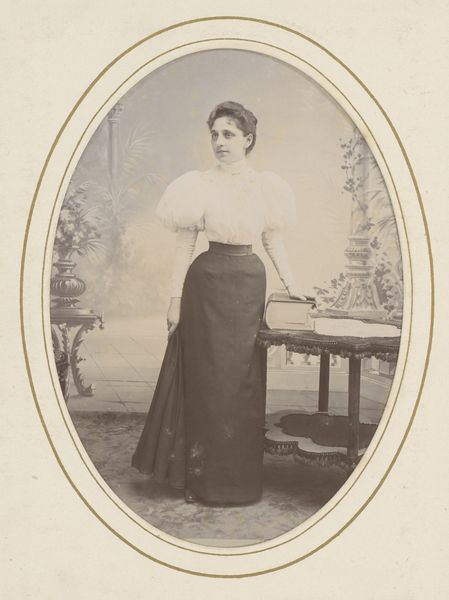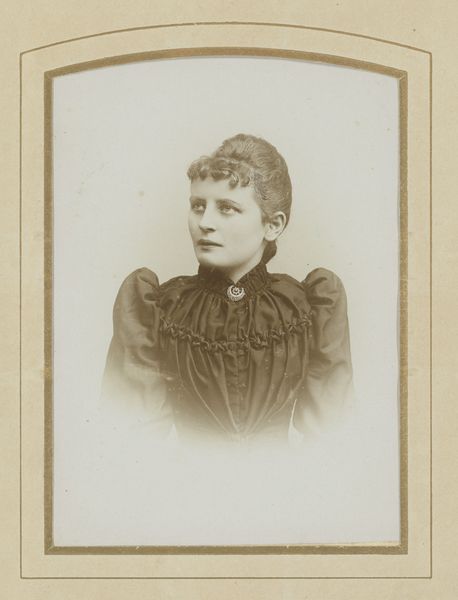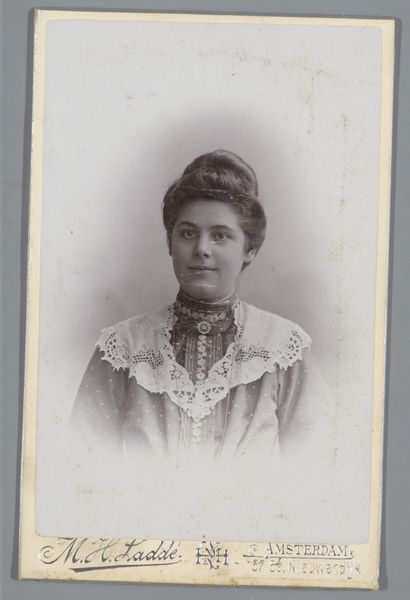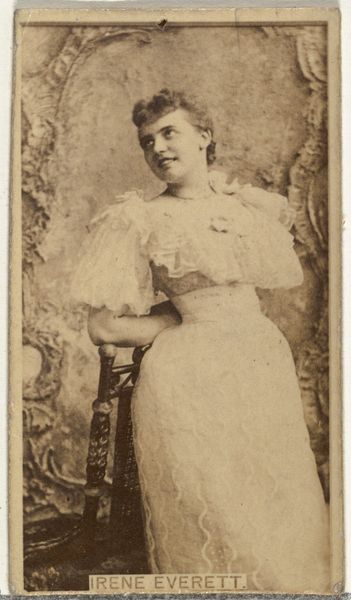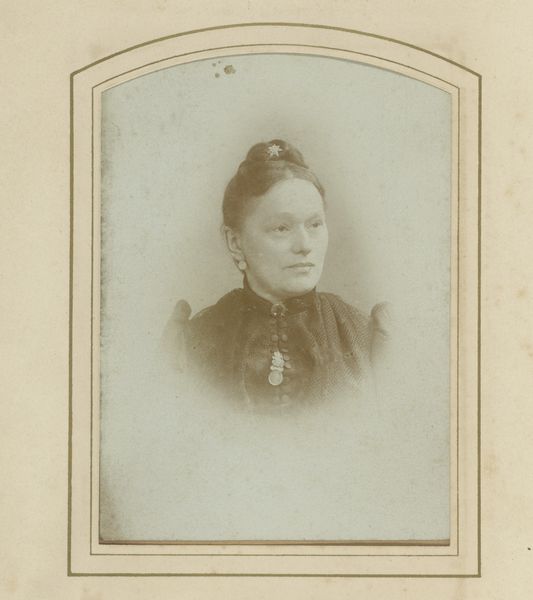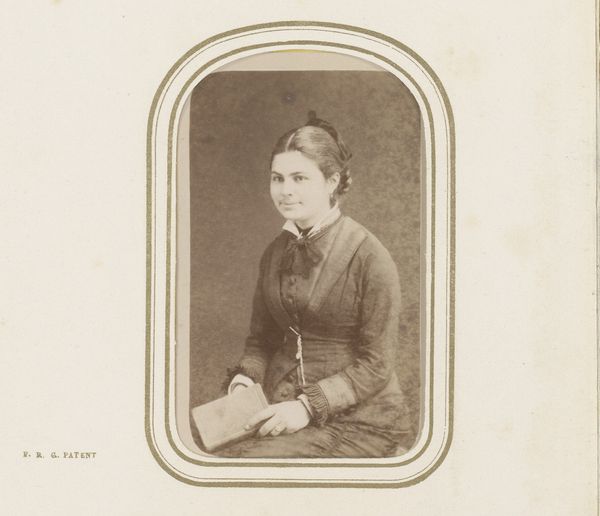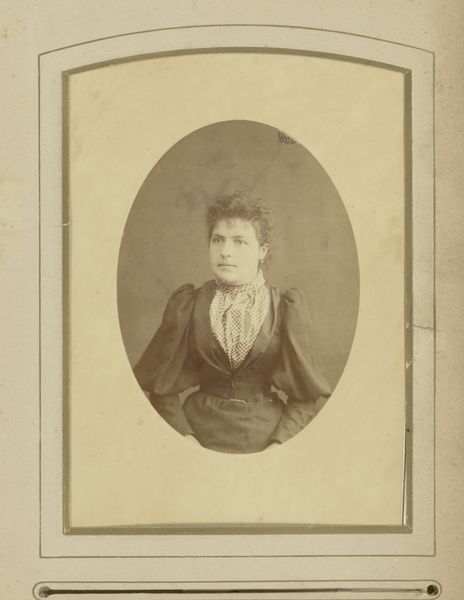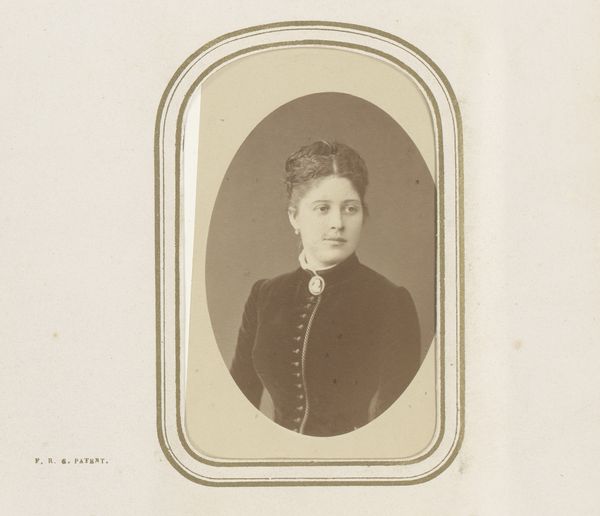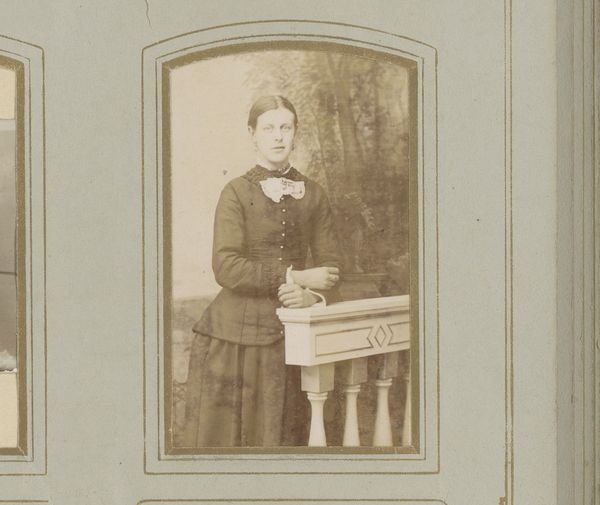
photography
#
portrait
#
still-life-photography
#
dog
#
photography
#
historical photography
#
genre-painting
Dimensions: height 133 mm, width 94 mm
Copyright: Rijks Museum: Open Domain
Curator: Looking at this fascinating photo, "Portret van een zittende vrouw en een hond," attributed to Pieter Wilhelmus Roemer and dating from between 1880 and 1920, I am immediately drawn to the contrasting textures and the intimate atmosphere. Editor: Yes, the sepia tone definitely lends a melancholic, almost theatrical mood, wouldn’t you say? I can imagine this being proudly displayed in a Victorian home, a testament to social status and family life. Curator: Absolutely. The photograph offers an interesting insight into the materials used. The way the light catches the lace collar of the woman’s dress is exquisite; you can almost feel the intricate texture. The dog, a symbol of domesticity, sits poised beside her on what appears to be a faux wooden stump. These staging elements must have required careful sourcing and placement in the photographer's studio. I'm wondering about their cost. Editor: From a historical viewpoint, photographs like this one allowed for the democratization of portraiture. Prior to the wide adoption of photographic techniques, portraits were exclusively for the wealthy. Now, more families could participate in shaping their visual legacy and project an image of refinement. Look at how posed and serious they both are! It clearly signifies an intent. Curator: Indeed! But I wonder about the dog’s involvement in that intent. Was it more about the availability of the canine or was its participation planned in detail? Moreover, one could analyze the class implications in commissioning photography, how the image was reproduced and circulated. Editor: These portraits often reflected aspirations and performances of identity. In a time of social and political change, the sitter likely wanted to signal stability and respectability. The very act of memorializing oneself alongside a loyal pet spoke volumes. Perhaps they used it as a token of sentimental or as family status. Curator: Well, from a production standpoint, even this staged, almost cliché depiction speaks volumes. It reveals what materials were considered acceptable or even aspirational and desirable at the time of its making. What did they hope the consumer of the image would feel or think when contemplating it? Editor: These types of photographic portraitures definitely functioned as vehicles of social mobility but they have now acquired, many years later, an intimate sense of capturing the fragility of their moment, right? Curator: Precisely! These are the questions the objects propel into discourse today! Editor: Very interesting to think how an aesthetic, initially meant for a specific moment, creates diverse and complex meanings through its public presence, long after the creator or its original owner are long gone.
Comments
No comments
Be the first to comment and join the conversation on the ultimate creative platform.
